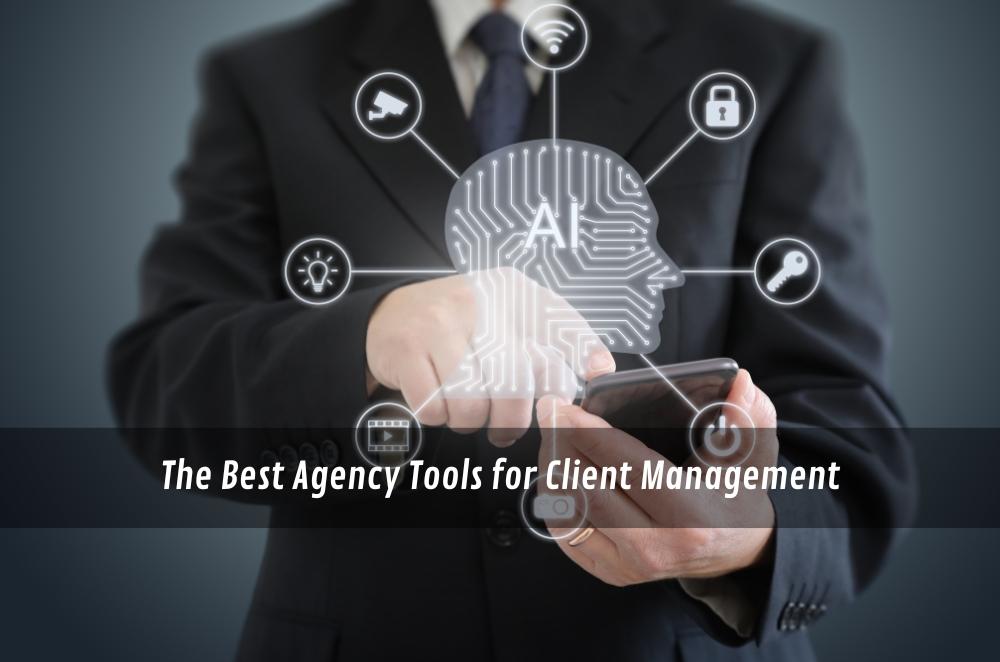The Best Agency Tools for Client Management

When client deadlines pile up, most agencies instinctively add another app or tool into the mix. But more often than not, that just creates extra noise. The agencies that handle growth smoothly tend to think differently: instead of juggling dozens of platforms, they focus on tightening the way information moves from intake to delivery and back again. That means being deliberate about which tools you choose, how they connect, and how your team actually uses them day to day. If you’ve ever felt like reports, briefs, and approvals are living in too many places at once, it might be time to optimise your marketing stack so that clients get clarity without your team burning out. In this article, we’ll look at the kinds of tools that make client management easier, where AI lends a hand, and how to set up systems that work quietly in the background.
What “client management” looks like when it actually works
Client management is the connective tissue between sales conversations, delivery work and the outcomes a client can point to. When it clicks, every update answers three questions: what happened, why it matters, and what you’re doing next. The tooling only matters insofar as it supports that rhythm.
-
Map one path for requests so nothing arrives “off to the side”.
-
Use templates for scopes, campaigns, and page builds—reduce reinventing.
-
Keep approvals visible and final; “approved” should mean “locked”.
-
Report on business questions, not just channel metrics.
I’ve seen teams recover whole afternoons by standardising how work enters the system. One Tuesday, a pod replaced ad-hoc Slack pings with a short intake form that triggered scoped tasks. By Friday, status meetings were shorter because everyone could see the same board and the same due dates.
Core tool categories that steady the client relationship
A tight stack uses one or two tools in each category—nothing sprawling, nothing duplicated. The aim is to reduce context switching and make every change traceable.
-
CRM & pipeline: Single source of truth for contacts, deals and services.
-
Intake & scoping: Conditional forms that produce tasks with time estimates.
-
Project management: Templates, capacity views, and clear ownership.
-
Client communications: Weekly digest via portal or scheduled update.
-
Reporting & analytics: Unified dashboards with plain-English commentary.
-
Knowledge base & approvals: Brand notes, tone, and decision history.
For AI, start small: meeting summaries to tasks; first-draft report commentary; anomaly alerts that flag spend spikes or conversion dips; QA checklists before launch. Treat AI as the fast-first-draft assistant, not the strategist.
Foundations that make dashboards believable
The fastest way to lose trust is to show three different “truths.” Clean data is quite confident: names match, fields line up, and UTM patterns are boringly consistent. Pick a control point (usually the CRM) for who “wins” when records conflict. Then document campaign naming, conversion events, and status codes. It’s unglamorous, and it saves relationships.
-
Standardise naming (campaigns, UTMs, product SKUs).
-
Automate data movement; keep the “so what?” human.
-
Track service levels: ticket age, % met, approvals overdue.
If search is part of your client’s channel mix, it’s worth keeping the basics sharp. Things like clear site structure, clean titles, internal links, and page speed still carry more weight than any shiny tactic. When those foundations are in place, it becomes much easier to improve your search engine rankings in a steady, reliable way, rather than chasing quick wins. Framing it this way helps your team build habits that last, while giving clients a level of consistency they can count on.
Intake, scope and the calm project room
Every messy handover looks the same: assumptions, scattered files, and deadlines nobody agreed to. A clean intake process turns vague requests into scoped, trackable work.
-
Use a single intake form with conditional logic per service.
-
Auto-create tasks with owners, estimates and due dates.
-
Store client goals and constraints beside the work, not in chat history.
-
Keep a “risk notes” field so surprises aren’t surprises.
A small example: we tagged every task with “success metric” at creation. Weeks later, writing a report was faster because the commentary aligned with the same metric names from intake. Less rewriting, fewer clarifications, tighter loops.
Reporting that clients actually read and respond to
Reports win when they answer what matters in a page or two. Stack the essentials up top, then show evidence.
-
Executive summary in three lines: what, why, what next.
-
“Changes we made” ties activity to outcomes.
-
“Experiments next” sets the agenda and reduces back-and-forth.
-
SLA panel: response time, open tickets, approvals due.
Where AI helps: translating numbers into a first paragraph you’ll refine; highlighting anomalies; and generating snapshot updates at predictable times so the team starts the day deciding, not compiling.
Over time, the best client reports read like a running story. They’re short, consistent and anchored to the questions the client repeats. That tone builds trust faster than a thousand charts.
Search shifts and staying practical in an answer-led web
Search behaviour keeps shifting toward quick, answer-first results. That doesn’t mean traditional SEO disappears; it means your strategy has to adjust so that content is structured in a way that both people and algorithms can grasp quickly. Agencies that plan for this shift tend to build stronger long-term visibility, because they’re not just chasing keywords — they’re anticipating how search is evolving. One way to think about this shift is the importance of staying ahead in digital search, where your content strategy isn’t just about ranking today but about being prepared for how audiences will discover and consume information tomorrow.
Choosing tools without getting lost in features
A lightweight scorecard keeps you honest. Judge options against outcomes, not feature bingo.
-
Fit for workflow: Can we mirror intake → scope → tasks → approvals → report?
-
Integration depth: Does it map the fields we actually use?
-
Client experience: Is there a predictable way to deliver updates?
-
Governance: Permissions, audit logs, and export options.
-
Time to value: Can a pod get real benefit within two weeks?
Run a 90-day rollout in four waves: set the foundations; templatise work; launch a digest or portal; then scale and add governance. Kill overlaps as you go. Momentum beats a perfect blueprint.
Content that compounds (and keeps helping deliver)
Strong delivery always ties back to the quality of the content you’re working with. Short-lived posts might create quick bursts of attention, but it’s the evergreen pieces that keep supporting campaigns over time. To make that possible, it’s worth considering practical ways to implement your content strategy, so the assets you invest in today still hold weight when platforms shift or client needs evolve. Cornerstone resources—like comprehensive guides, reference articles, or adaptable landing pages—can be updated without losing their value, giving your team reliable material to work with quarter after quarter.
Final thoughts
A steady client relationship is mostly logistics done well: one front door for requests, clear scopes, visible approvals, succinct reports, and a cadence the client can predict. Tools support that rhythm when they’re chosen for fit and stitched together thoughtfully. Start with one bottleneck—status churn, ad-hoc requests, or reporting drudgery—and fix that first. The rest gets easier once the team feels the difference.






